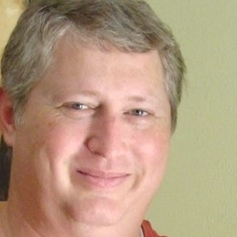What’s Right With Today’s MegaChurches?
Orginally published on Monday, February 13, 2006 at 8:20 AM
by Todd Rhoades
I have often criticized facets of the Mega-Church model in general, and the church I attend in particular. One may rightly wonder, "If he is so unhappy there, then why does he keep going?" Sometimes I ask myself that same question. I am pretty certain the Elders of the church are also asking a variation of that question. "If you think we are so bad, just why are you here?" It is a good question. Does my attendance at a church I sometime criticise involve me in a moral contradiction?
In short, am I a hypocrite? Well, yes, of course I am. Most people are on one level or another. But in this case, I don't think my hypocrisy is contributing substantially in that regard. Not all is bad in the Mega-Church (or in my case, Mega-Church wanna be—more on that later). There are many things to admire generally in the mega-Church movement in America. This admiration extends to my own church as well.
Accordingly, many of my posts should be viewed as an intramural debate. Some of the facets of the mega-church/seeker movement (and I recognize those may not be the same) do drive me crazy. These include characteristics such as an exclusive emphasis on happy songs in the worship service, sermons that often reflect procedures to "fix" your life, a distinctive flavor of marketing-slickness over Gospel simplicity, etc. However, many of these faults are present in American Christianity as a whole. The mega-church just concentrates them better in one place than the smaller congregations are able. Though I would like these areas to change, they should not overshadow the overwhelming dedication and ministry of the vast majority of mega-church congregations and staff (including ours).
This conclusion is supported in the research findings of Scott Thumma, Dave Travis, and Warren Bird in their statistical survey, Megachurches Today 2005. (The numbers in parenthesis that follow will refer to page numbers in the report.) The surveys were mailed to churches with attendance of over 1,800 (1,836 churches in total) of which 406 responded with attendance within that range. In reviewing the database of churches involved, the church I attend was not listed although another church that I live near and of which I have some association and history, was. I know our church must have attendance close to that range so perhaps it was border-line at the time of the survey. Therefore, as yet, according to this survey my church is not yet officially a mega-church but it has to be very close. Though more for fun than fact, I refer to it as the mega-church "wanna be," its current size and ministries closely parallel the findings in this report.
In terms of worship services, the pastors and worship teams of the mega-churches have to be extremely dedicated. The average mega-church has multiple worship services per weekend (pg. 5) The majority (51%) have 3-4 services; the next 20% have 5-6 services.. Our church has seven which puts it in the upper 6%. One pastor preaches at four services himself (one on Saturdays and three on Sunday mornings). A second pastor does three more post-modern type services for the younger generation on Sunday afternoons. Each service has a set of worship teams that rotate on the weekends, but on their selected weekend they are at each and every service! The pastors are under this same regiment each and every weekend. (The post-modern group is even adding a Tuesday evening service at another venue.)
This dedication to the worship needs of the congregation would have been beyond the imagination of the average pastor some ten years ago. It is still somewhat beyond my imagination today. Such men and women deserve nothing but admiration and praise for their perseverance and commitment.
Another startling result of the survey was the political nature of the mega-churches (pg. 7). Although the vast majority of Mega-churches identified themselves as either predominantly (50%) or somewhat (33%) conservative, only a minority (16%) translated this orientation into political "clout." This result also accords well with our present church. I recall only one sermon that was presented on an explicitly political issue. I also know, to the frustration of some of my friends, that the pastorate and staff do not encourage or even put unofficial support behind political marches, protests, or even petitions. So despite the American flag's ubiquitous presence in the sanctuary, this presence does not appear to translate into an expressed involvement with Caesar.
Despite the stereotype, the congregation of the average mega-church is extremely devout; or at least the leaders so evaluate their congregations. I am not certain of the basis the leaders used to make this judgment, but let us assume for now it was accurate. If so, then the vast majority of congregations (above 70%) emphasize personal Scripture study, prayer, and tithing. I know our church, in an internal survey, did not score as highly in these areas of spirituality as the leadership would have liked. However, on its own, this factor scores again in favor of this church. They are concerned about this result and are working on ways to increase these practices (and I don't mean just in terms of tithing). There is a proper focus and goal on the part of the Elders and other leaders that must be commended. Though we were once referred to as "giving units' in a brochure during one of the many expansion projects, it is clear that the leadership regards the welfare of the congregation as far beyond that designation.
Another trend that is markedly in favor of the Mega-church is its racial base (pg. 7). It is often said (even by me) that Sunday is the most segregated day of the week. This proclamation simply misses the mark when aimed at the mega-church. Such congregations tend to be multi-racial with an average representation of minority groups at the 19% level. Thirty-six percent had a 20% or higher representation with only a lowly 10% having no representation of outside races. (This last 10% could consist of exclusively black as well as exclusively white churches.) Though not racially unmixed, our own congregation is predominately white. However, many in the music ministry are black, including "featured" performers. My son's Bible study leader is black as well. The lower mixture is probably more due to location than anything else.
The greatest strength of the mega-church lies in its varied ministries. Their dedication is not limited to the sanctuary. As the study notes, "Megachurches are well known for offering a wide variety of activities and ministry programs." This I can easily confirm. Nor are such ministries limited to attendees or even contributors. Most, though obviously religious in flavor, are open to the entire surrounding community. My wife attends a home-schooling group at the "listed" mega-church (as well as two others: one at our church and another at a smaller congregation). Our own church offers a full page of ministries to those in the community who are hurting as well as in need. Just some examples out of many, the church has various ministries to parents of newborns, to those hospitalized, to those in prison, to those bereaved, and those involved in elder care. They have ministries to console those dealing with divorce, cancer, and financial troubles. Each year, they send mission teams to Detroit, Appalachia, South Africa, El Salvadore, and Thailand (to name a few). In addition since the hurricane, there as been a constant stream of volunteers as well as funds going out of our church to help clean up and rebuild New Orleans. The congregation also supports an orphanage in El Savadore that is co-led by a former member.
The mega-churches obviously have larger buildings to house their worship services as well as these ministerial activities. The median seating capacity of buildings was 1,400 with equal numbers below and above this capacity (pg. 2). At the same time, these buildings are actively used throughout the week. I know it is rare to pass by our own building (capacity of 500 and growing) on any day of the week and not see a large number of cars in the parking lot. During the Reformation, the Catholic Church had its doors open every day for celebrations of the Mass. Luther locked the doors of the church except on Sundays to promote the priesthood of the believer and the value of work outside of formal worship. The mega-church has found the third way—they have Sunday and Saturday services to be sure, but on weekdays the church is unlocked to support the priesthood of the believer. The building is open to aid the multiple ministries and needs of the congregation, helping them to extend salvation to the world of work, hearth, and home as well as in formalized worship.
So despite its faults, the mega-church has also been a valuable development in the latter part of the 20th century (2% founded after 2000 with 44% founded before 1960—pg. 4). I can proudly number many of their favorable characteristics in my own mega-church "wanna be." At the same time, my own church specifically has one major advantage over the rest of the mega-churches or even the smaller churches of my experience:
They haven't thrown me out yet.
![]()
This post has been viewed 124 times so far.
TRACKBACKS: (0)
There are 3 Comments:

Hi... I'm Todd Rhoades. I'm a Christ-follower, husband, father and I love to connect leaders with other leaders. Hopefully you'll find something here at MMI you like and will return often. If you want, you can find out more about me or follow my every step on Twitter.
![]()



-
Posted by eric
Monday, February 13, 2006 at 9:55 AM
-
Posted by Bernie Dehler
Monday, February 13, 2006 at 11:38 AM
-
Posted by Matt
Friday, February 17, 2006 at 2:39 AM
Post Your Comments:I guess this makes me ask: Why are we who are in the church (and part of its leadership) better at “critiquing” than we are at building up?
I guess the question is more rhetorical, because I at least have some inside knowledge of this. But, we do need to be constantly reminded that encouragement should be our strong suit.
If you want to judge churches, do it as God does. You can see how God rates the various churches in the book of Revelation. It doesn’t matter how “busy” or big a church is, but what matters is if it’s doing the will of God.
...Bernie
http://fgn.typepad.com/
I keep looking back to this article and just crack up at the lack of responses.
The phrase, “You got served” comes to mind.
Page 1 of 1 pages